We are hacking learning and memory
for cognitive enhancements
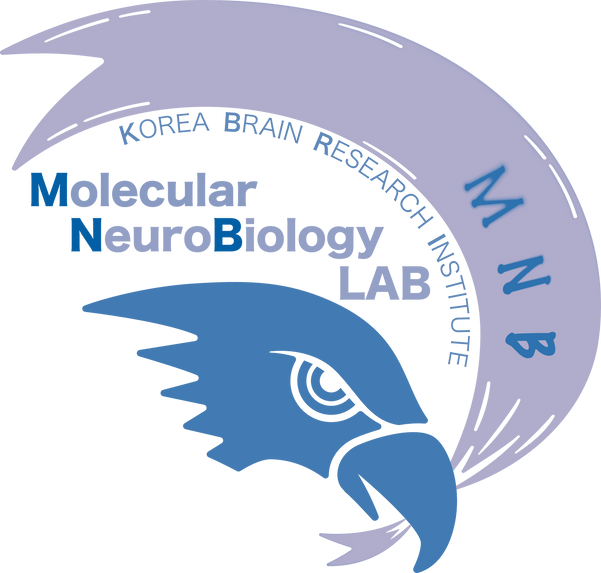
We are Molecular NeuroBiology (MNB) lab

at Korea Brain Ressearch Institute (KBRI)
Understanding inter-cellular crosstalk for cognitive enhancements
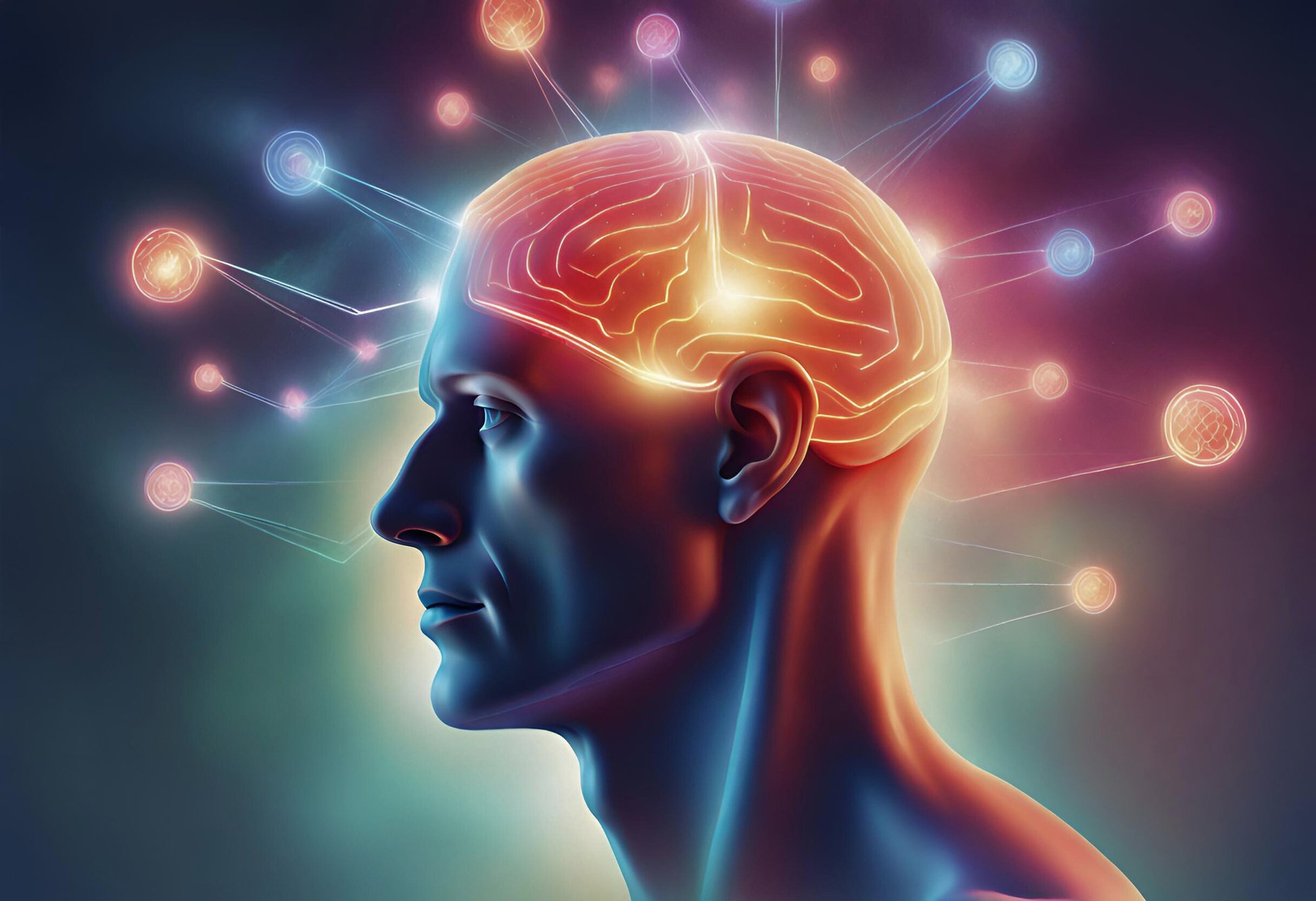
to ask whether memory enhancements could be achieved by targeting
neuron-astrocyte or body-brain crosstalk?
Neuron-astrocyte crosstalk during learning and memory
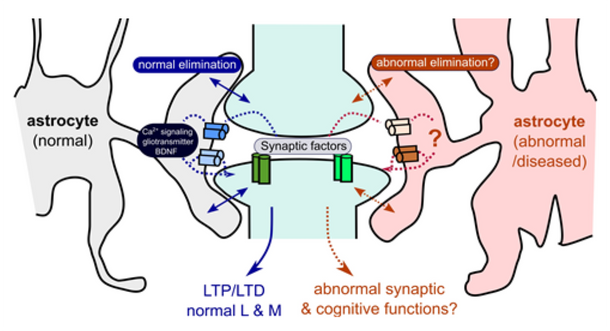
- Learning and memory depends on plastic changes of neuronal synaptic transmission (synaptic plasticity)
- Astrocytes, the primary non-neuronal cell type in the brain, directly contact with synapses and engage in factor exchange with neurons, influencing synaptic plasticity
- Targeting astrocyte-mediated modulation of synaptic plasticity emerges as a promissing avenue for enhancing cognitive functions
- But mechanisms underlying neuron-astrocyte communication during learning and memory are not fully understood.
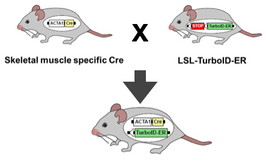
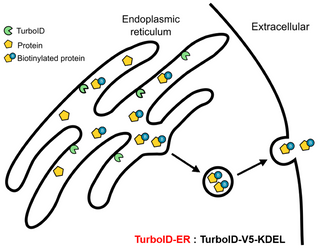
- We're combining molecular, cellular, electrophysiological techniques, mouse genetics, and behavioral analysis to unveil new inter-cellular communication between neurons and astrocytes.
- This aims to propose strategies for enhancing cognition in both healthy and diseased brains.
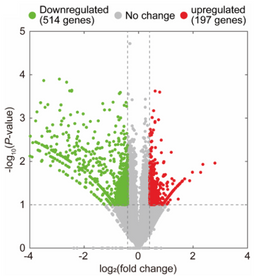
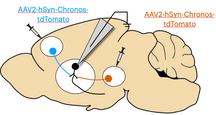




Body-brain crosstalk during learning and memory
- There's substantial evidence supporting the idea that memory can be improved through physical activities like exercise.
- Some factors triggered by exercise from peripheral organs, including muscles, are thought to contribute to these cognitive improvements.
- Yet, there's a chance that there are more factors from muscles influencing brain functions that we haven't discovered yet.
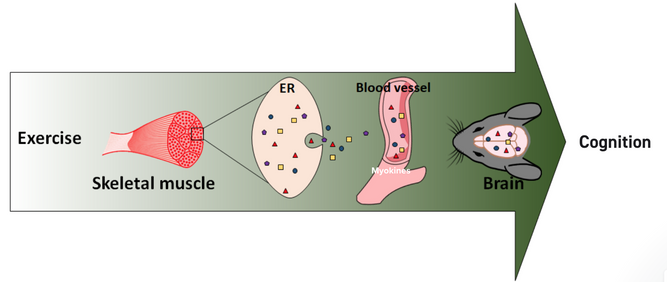

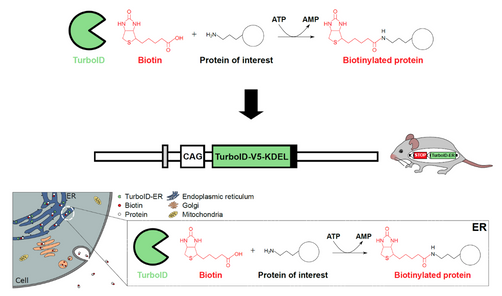
- Through organ-specific protein labeling, we pinpointed various exercise-triggered factors originating from muscles.
- Elevating the blood levels of these newly identified muscle-derived factors replicated the memory enhancement seen with exercise.
- We now delve into the intricate mechanisms behind how these muscle-derived factors enhance memory.
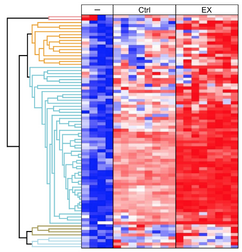



Why epilepsy?
- one of three major brain disorders
- adult-onset
- 35% of epilepsy is incurable in South Korea
- dysregulated cognitive functions
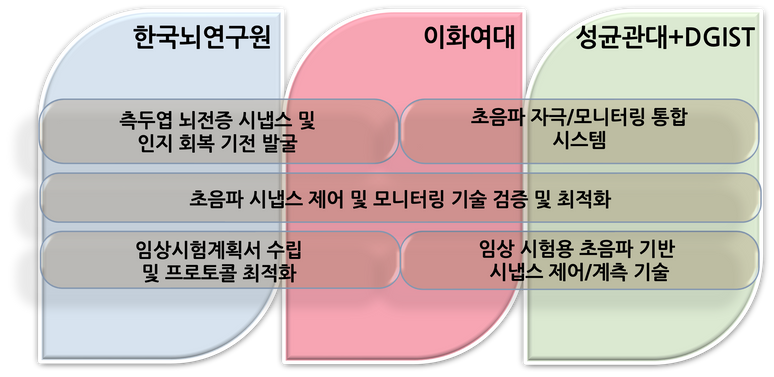
Restoring dysfunctional memory functions in diseased adult brain?

Temporal lobe epilepsy as synaptic pathology
- Abnormally increased neural circuit connectivity & activity
- Abnormal synaptic structures and activity
- Reduced synaptic plasticity & learning and memory
- but no known molecular mechanisms at synapse level..
Multi-disciplinary approach to develop non-invasive technology treating temporal lobe epilepsy
- Join research project among KBRI - DGIST - 성균관대 - 이화여대 의과대학
- Integrated technology combining ultrasound-based stimulation & high-sensitive neuronal activity monitoring for non-invasive brain stimulation and recording
- Evaluating ultrasound-based stimulation with neuronal activity monitoring for clinical and pre-clinical treatment assessment.
- Investigating synaptic mechanisms to suppress seizure activity and restore cognitive functions by ultrasound stimulation

What we’ve done
2015 ~ current
- Kim JY, Kim H, Chung WS, Park H. Selective regulation of corticostriatal synapses by astrocytic phagocytosis. In revision (Nature Communications)
- Soto J, Song Y, Wu Y, Chen B, Park H, Akhtar N, Wang PY, Hoffman T, Ly C, Sia J, Wong S, Kelkhoff DO, Chu J, Poo MM, Downing TL, Rowat AC, Li S. Reduction of intracellular tension and cell adhesion promotes open chromatic structure and enhances cell reprogramming. Adv Sci. 2023, 10(24): 2300152.
- Kim KW, Hwang J, Kim DH, Park H, Lim HH. Cytosolic domain regulates the calcium sensitivity and surface expression of BEST1 channel in the HEK293 cells. BMB Rep. 2023, 56(2): 172-177
- Han J, Yoon S, Park H. Endocytic BDNF secretion regulated by Vamp3 in astrocytes. Sci Rep. 2021, 11(1): 21203
- Lee JH, Kim JY, Noh S, Lee H, Lee SY, Mun JY, Park H, Chung WS. Astrocytes phagocytose adult hippocampal synapses for circuit homeostasis. Nature. 2021 Feb;590(7847):612-617. (Co-first / co-corresponding author)
- Oh JY, Han JH, Lee H, Han YE, Rah JC, Park H. Labeling Dual Presynaptic Inputs using cFork Anterograde Tracing System. Exp Neurobiol. 2020; 29(3): 219-229.
- Kim Y, Jang YN, Kim JY, Kim N, Noh S, Kim H, Queenan BN, Bellmore R, Mun JY, Park H, Rah JC, Pak DTS, Lee KJ. Microtubule-associated protein 2 mediates induction of long-term potentiation in hippocampal neurons. FASEB J. 2020 May;34(5):6965-6983.
- Yoo KS, Lee K, Oh JY, Lee H, Park H, Park YS, Kim HK. Postsynaptic density protein 95 (PSD-95) is transported by KIF5 to dendritic regions. Mol Brain. 2019 Nov 21;12(1):97.
- Park H and Kaang BK. Balanced actions of protein synthesis and degradation in memory formation. Learning and Memory. 2019, 26 (9): 299-306
- Han YE, Kwon J, Won K, An H, Jang MW, Woo J, Lee JS, Park MG, Yoon BE, Lee SE, Hwang EM, Jung JY, Park H, Oh SJ, Lee CJ. Tweety-homolog (Ttyh) family encodes the pore-forming subunits of the swelling-dependent volume-regulated anion channel (VRACswell) in the brain. Experimental Neurobiology. 2019, 28(2):183-215
- Oh JY, Lim CS, Yoo KS, Park H, Park YS, Kim EG, Lee YS, Kaang BK, Kim HK. Adenomatous polyposis coli-stimulated GEF 1 (Asef1) is a negative regulator of excitatory synaptic function. Journal of Neurochemistry. 2018, 147(5):595-608
- Jhang J, Lee H, Kang MS, Park H, Han J-H, Anterior cingulate cortex and its input to the basolateral amygdala control innate fear response. Nature Communications. 2018, 9:2744. (co-corresponding author)
- Park H, Cortical axonal secretion of BDNF in the striatum is disrupted in the mutant-huntingtin knock-in mouse model of Huntington's disease. Experimental Neurobiology. 2018, 27(3): 217-225.
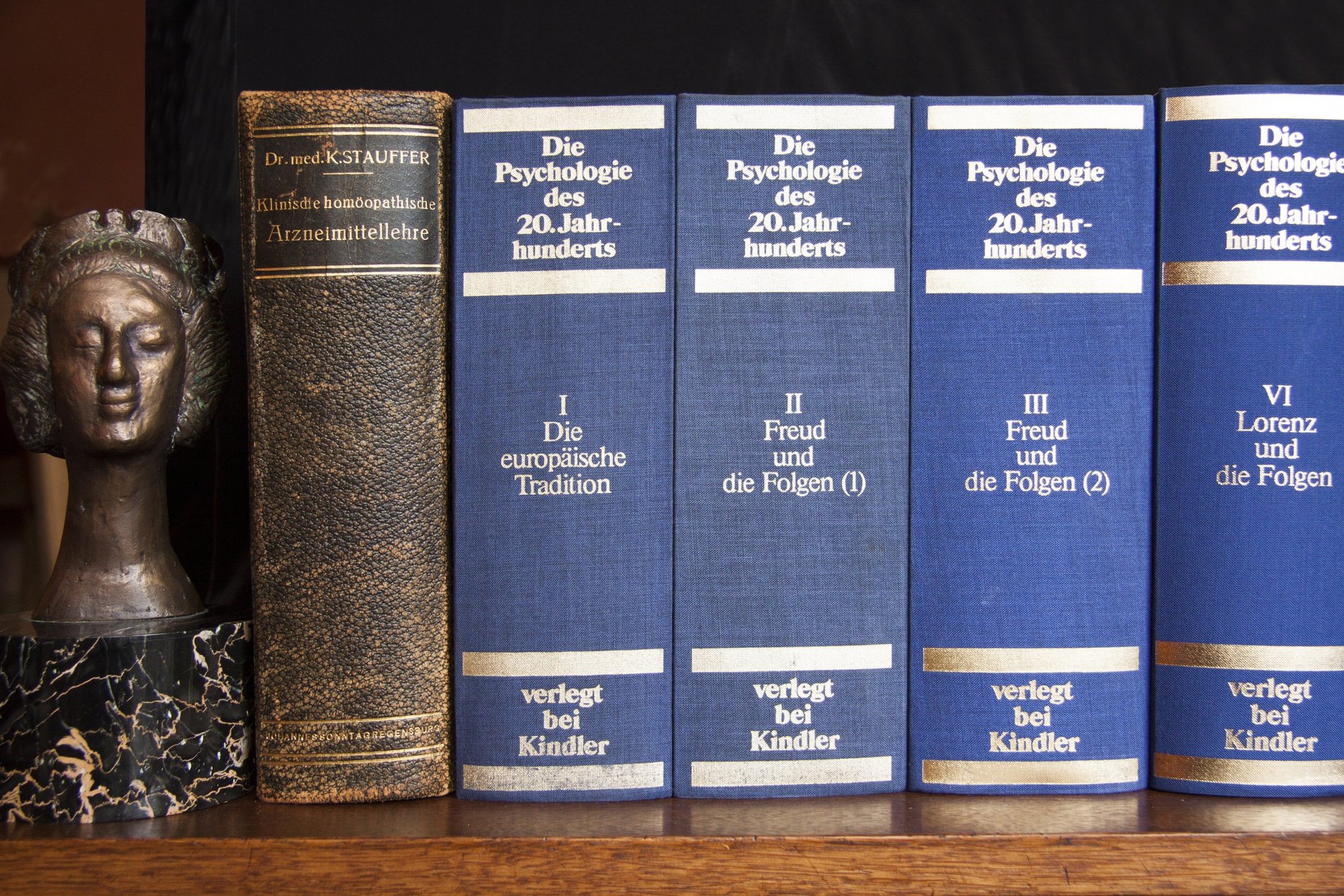
Selected papers before 2015
- Park H, Han KS, Seo J, Lee J, Dravid SM, Woo J, Chun H, Cho S, Bae JY, An H, Koh W, Yoon BE, Berlinguer-Palmini R, Mannaioni G, Traynelis SF, Bae YC, Choi SY, Lee CJ, Channel-mediated astrocytic glutamate modulates hippocampal synaptic plasticity by activating postsynaptic NMDA receptors. Molecular Brain. 2015, Feb 3; 8(1):7.
- Park H, Popescu A, Poo MM, Essential role of presynaptic NMDA receptors in activity-dependent BDNF secretion and corticostriatal LTP, Neuron. 2014 Dec 3; 84:1009-22.
- Park H, Han KS, Oh SJ, Jo S, Woo J, Yoon BE, Lee CJ, High glutamate permeability and distal localization of Best1 channel in CA1 hippocampal astrocyte. Molecular Brain. 2013 Dec 9;6(1):54.
- Park H, Poo MM. Neurotrophin regulation of neural circuit development and function. Nature Reviews Neuroscience. 2013 Jan;14(1): 7-23
- Park H, Oh SJ, Han KS, Woo DH, Park H, Mannaioni G, Traynelis SF, Lee CJ. Bestrophin-1 encodes for the Ca2+-activated anion channel in hippocampal astrocytes. Journal of Neuroscience. 2009 Oct 14; 29(41): 13063-73.
- Park H, Pack C, Kinjo M, Kaang BK. In vivo quantitative analysis of PKA subunit interaction and cAMP measurement using dual color Fluorescence Cross Correlation Spectroscopy. Molecules and Cells. 2008 July 31; 26(1): 87-92.
- Lee SH, Lim CS, Park H, Lee JA, Han JH, Kim H, Cheang YH, Lee SH, Lee YS, Ko HG, Jang DH, Kim HK, Miniaci MC, Bartsch D, Kim E, Bailey CH, Kandel ER, Kaang BK. Nuclear Translocation of apCAM-Associated Protein Activates Transcription for Long-Term Facilitation in Aplysia. Cell. 2007 May 18; 129(4): 801-12. (co-first author)
- Park H, Lee JA, Lee C, Kim MJ, Chang DJ, Kim H, Lee SH, Lee YS, Kaang BK. An Aplysia type 4 phosphodiesterase homolog localizes at the presynaptic terminals of Aplysia neuron and regulates synaptic facilitation. Journal of Neuroscience. 2005 Sep 28; 25(39): 9037-45.

Current Members
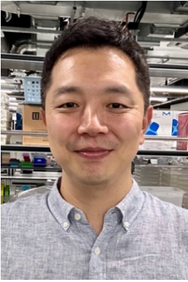
Principal research scientist
/ Principal Investigator (PI)
Hyungju Park (박형주), Ph.D.
Experience
- Senior / Principal Research Scientist @ KBRI (2015 ~ present)
- Adjunct Professor @ DGIST (2015 ~ 2023)
- Postdoctoral fellow / Associate Specialist @ UC Berkeley (advisor: Dr. Mu-ming Poo; 2009~2015)
- Postdoctoral fellow @ KIST (advisor: Dr. C Justin Lee; 2007~2009)
Education
- Ph.D. (2000~2007), Seoul National University, Korea (advisor: Dr. Bong-Kiun Kaang)
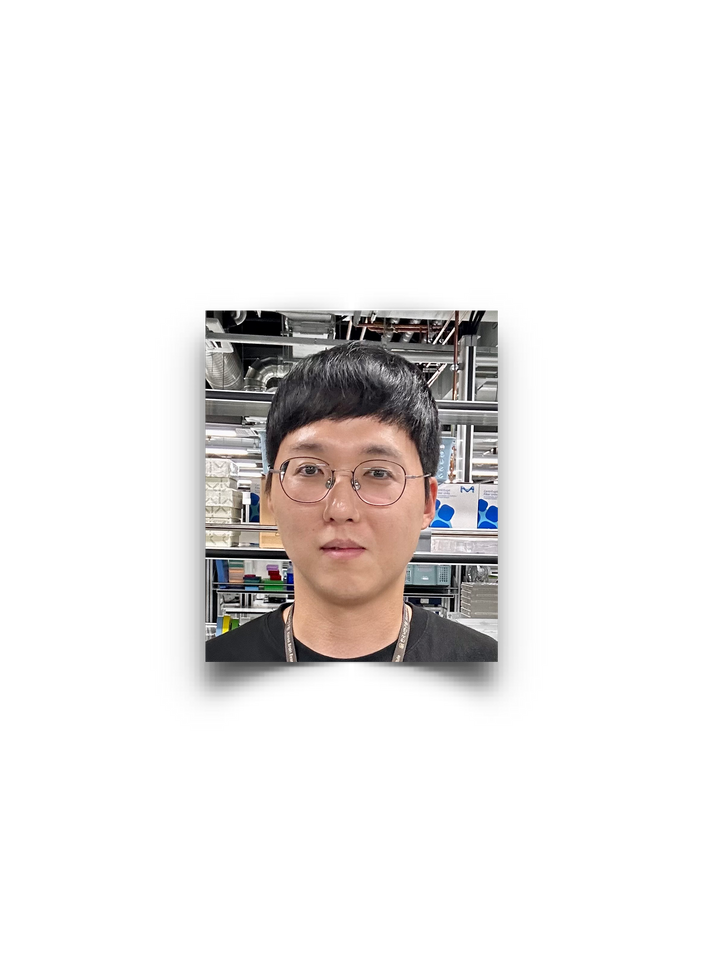
Research scientist
Jeongho Han (한정호), M.S.
Mol / Cell biology
neuron-astrocyte crosstalk

Research scientist
Hyoeun Lee (이효은), M.S.
Electrophysiology
Lab manager

Postmaster fellow
Hee Ju Moon (문희주), M.S.
Mol / Cell biology, behavior
neuron-astrocyte crosstalk

Ph.D. candidate
Mol / Cell biology, behavior
Muscle-brain crosstalk
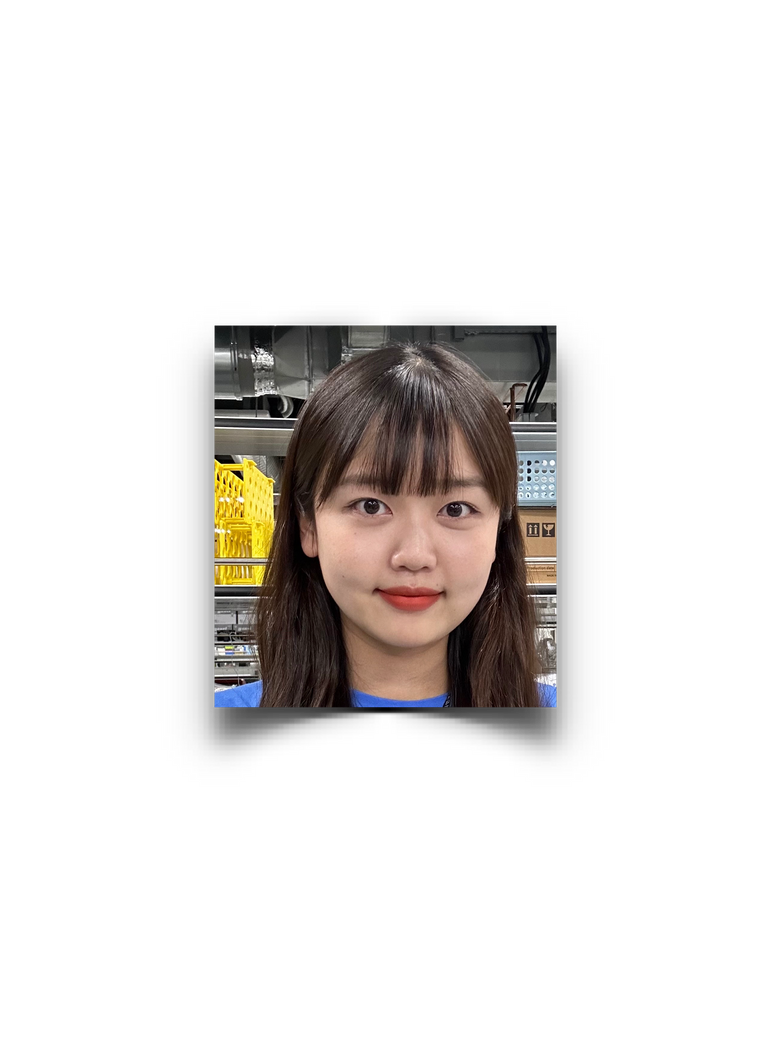
Ph.D. candidate
Hyeyeon Kim (김혜연)

Undergraduate internship
Song A Shin (신송아)
Past Members
김지영 (PhD)
정세진 (MS)
박서윤 (MS)
오준영 (Research scientist)
이제선 (Postdoctoral fellow)
윤성령 (MS)
Hyunyoung Kim (김현영)
Mol / Cell biology, electrophysiology
neuron-astrocyte crosstalk
Mol / Cell biology
neuron-astrocyte crosstalk

We are hiring!
CV, 이력서 및 지원 동기나 연구계획 등을 phj.mnb at gmail.com으로 보내주시기 바랍니다.
Please send your CV/resume and cover letter including research interest to phj.mnb at gmail.com
Post-doctor or -master fellow
- 신경세포-성상교세포 상호작용에 의한 인지기능 조절 및 뇌전증 치료 기술 개발
- 근육세포 유래 단백질에 의한 인지 증강 기전 및 퇴행성뇌질환/노화성 인지 감퇴 극복 기술 발굴
- 자격
- 생명과학, 의학, 약학, 화학 및 기타 관련 전공 석/박사 학위자
- 학위 취득 3년 이내 및 fellowship 보유 우대
- Also prefer foreign nationals who are fluent or have no issues with communication with Korean
Ph.D. student
- 신경세포-성상교세포 상호작용에 의한 인지기능 조절 및 뇌전증 치료 기술 개발/ 근육세포 유래 단백질에 의한 인지 증강 기전 발굴
- 전형 일정 및 필요 서류: 학연프로그램 참여 대학 규정에 따름
**학연프로그램 참여 (예정) 대학: 서울대학교 의과대학, DGIST, 경북대학교, UNIST, 아주대 등
Undergraduate internship
- 생명과학, 의학, 약학, 화학 및 기타 관련 전공 학부 3~4학년 대상
- 대학원 진학 고려 대상자 우대